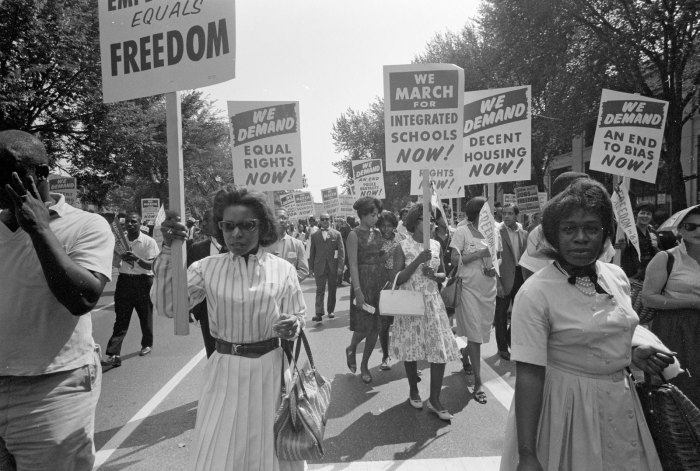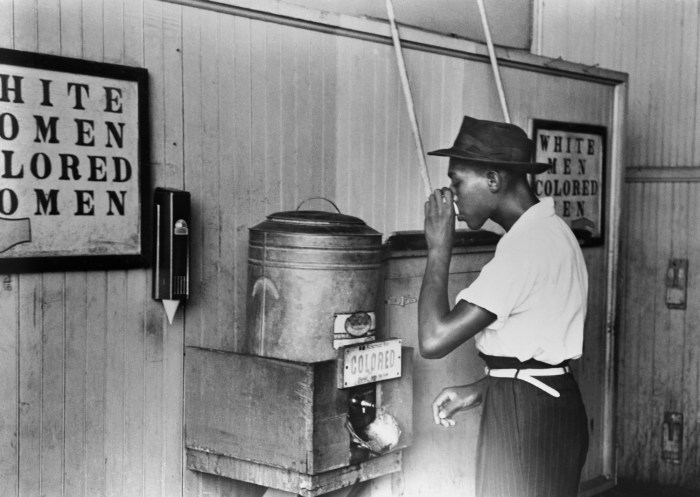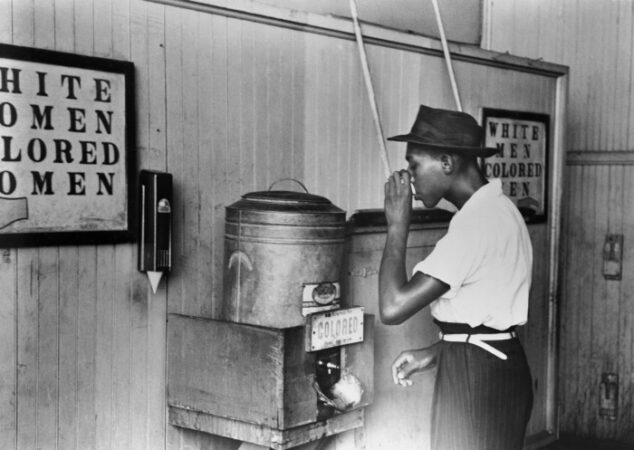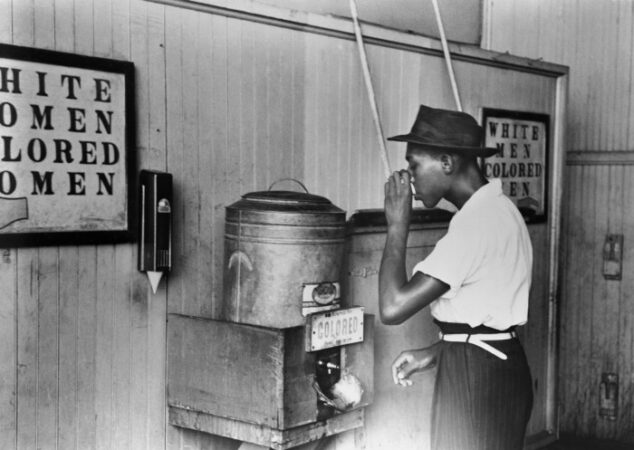
What were segregation laws sets the stage for this enthralling narrative, offering readers a glimpse into a dark chapter of American history. These laws, deeply rooted in racism and prejudice, systematically separated people based on their race, creating a society rife with injustice and inequality.
From the origins of Jim Crow in the post-Reconstruction South to the legal battles that ultimately overturned these discriminatory policies, the story of segregation laws is a complex one. This exploration will delve into the historical context, the types of laws enacted, the devastating impact on African Americans, and the enduring legacy that continues to shape our society today.
Historical Context of Segregation Laws: What Were Segregation Laws

Segregation laws in the United States, also known as Jim Crow laws, were a set of state and local laws enacted between 1877 and the mid-1960s. These laws enforced racial segregation and discrimination against African Americans in the South and, to a lesser extent, in other parts of the country. The origins of these laws can be traced back to the Reconstruction era following the Civil War, when the South faced a period of significant social and political upheaval.
The Reconstruction era (1865-1877) was a time of hope and progress for African Americans, who gained their freedom and citizenship through the 13th, 14th, and 15th Amendments to the Constitution. However, this progress was short-lived, as white Southerners, many of whom were determined to maintain their pre-war social order, actively resisted the changes brought about by Reconstruction. The withdrawal of federal troops from the South in 1877 marked the beginning of the Jim Crow era, characterized by the resurgence of white supremacy and the systematic disenfranchisement of African Americans.
Origins of Segregation Laws
The origins of segregation laws can be traced back to the period immediately following the Civil War. After the abolition of slavery, white Southerners sought to maintain their dominance and control over African Americans. They enacted a series of laws known as “Black Codes,” which aimed to restrict the freedoms and rights of African Americans. These codes were often designed to force African Americans back into a system of forced labor, similar to the conditions of slavery.
- For instance, some Black Codes prohibited African Americans from owning land, voting, or serving on juries.
- They also mandated that African Americans carry “pass” documents to prove their employment status, effectively restricting their freedom of movement.
Social Conditions Leading to Segregation
The implementation of segregation laws was also fueled by the prevailing social and economic conditions of the time. In the late 19th and early 20th centuries, the South experienced a period of rapid industrialization and urbanization. As cities grew, there was increasing competition for jobs, housing, and other resources. In this context, white Southerners used segregation laws to maintain their dominance and control over economic opportunities.
Key Figures and Movements Opposing Segregation
Despite the harsh realities of segregation, African Americans, alongside allies, fought tirelessly against these discriminatory laws. The fight against segregation involved numerous individuals and organizations, each contributing to the movement for racial equality.
- One of the most prominent figures in the struggle against segregation was W.E.B. Du Bois, a prominent sociologist, activist, and scholar. He was a founding member of the National Association for the Advancement of Colored People (NAACP), a civil rights organization that played a pivotal role in challenging segregation and discrimination in the courts and in public opinion.
- Another significant figure was Booker T. Washington, an educator and activist who advocated for a more gradual approach to racial equality. He founded the Tuskegee Institute, a historically black college that focused on vocational training and economic empowerment for African Americans.
- The Civil Rights Movement of the mid-20th century was a watershed moment in the fight against segregation. Led by figures like Martin Luther King Jr., Rosa Parks, and Malcolm X, the movement employed nonviolent resistance and civil disobedience to challenge segregation laws and advance the cause of racial equality.
Legacy of Segregation Laws

The legacy of segregation laws in the United States continues to shape the nation’s social, economic, and political landscape. The systematic disenfranchisement and discrimination endured by African Americans for over a century have left a lasting impact on their lives and opportunities, and the effects of these policies are still felt today.
Socioeconomic Disparities
The enduring legacy of segregation manifests in persistent socioeconomic disparities between racial groups. Decades of discriminatory housing policies, educational practices, and employment opportunities have created a cycle of disadvantage that continues to hinder the progress of African Americans. For instance, the wealth gap between Black and white families remains significant, with Black families holding a fraction of the wealth of their white counterparts. This disparity is largely attributed to historical and ongoing discrimination in areas such as homeownership, access to quality education, and employment opportunities.
Ongoing Racial Inequality
Despite the legal dismantling of segregation, racial inequality persists in various forms. The legacy of segregation continues to influence contemporary issues such as racial profiling, mass incarceration, and disparities in healthcare access. For example, the overrepresentation of African Americans in the criminal justice system is a direct consequence of the historical legacy of racial bias and discriminatory policing practices. This systemic bias has led to higher rates of arrest, conviction, and incarceration for African Americans, perpetuating a cycle of disadvantage.
Continued Influence on Contemporary Issues, What were segregation laws
The legacy of segregation is not merely a historical artifact; it continues to shape contemporary issues and challenges. The racial wealth gap, for instance, has significant implications for economic mobility and access to opportunities. Similarly, the legacy of segregation in housing has contributed to the concentration of poverty in predominantly Black neighborhoods, leading to limited access to quality education, healthcare, and other essential resources. The ongoing struggle for racial justice in the United States is directly linked to the historical legacy of segregation and its enduring impact on American society.
Closing Notes

The fight against segregation was a long and arduous journey, marked by both setbacks and triumphs. The legacy of these laws, however, remains a potent reminder of the persistent challenges of achieving true equality in America. While significant progress has been made, the ongoing struggle for racial justice underscores the importance of understanding and confronting the enduring impact of segregation.
Popular Questions
What was the main purpose of segregation laws?
The primary purpose of segregation laws was to maintain white supremacy and prevent African Americans from achieving equality in all aspects of life, including education, employment, and housing.
How did segregation laws affect the lives of African Americans?
Segregation laws created a system of enforced inequality, denying African Americans access to basic rights and opportunities. This resulted in widespread poverty, limited educational opportunities, and systemic discrimination in all areas of life.
What are some examples of segregation laws?
Some examples include laws requiring separate schools, public restrooms, water fountains, and restaurants for Black and white people. Segregation also extended to housing, employment, and even voting.
What were some key legal cases that challenged segregation?
Landmark cases like Brown v. Board of Education (1954) and Loving v. Virginia (1967) played crucial roles in dismantling segregation by striking down laws that denied equal rights to African Americans.
How does the legacy of segregation continue to impact society today?
The legacy of segregation continues to manifest in persistent racial disparities in areas like wealth, education, healthcare, and criminal justice. These disparities highlight the need for ongoing efforts to address the systemic inequalities that remain.

